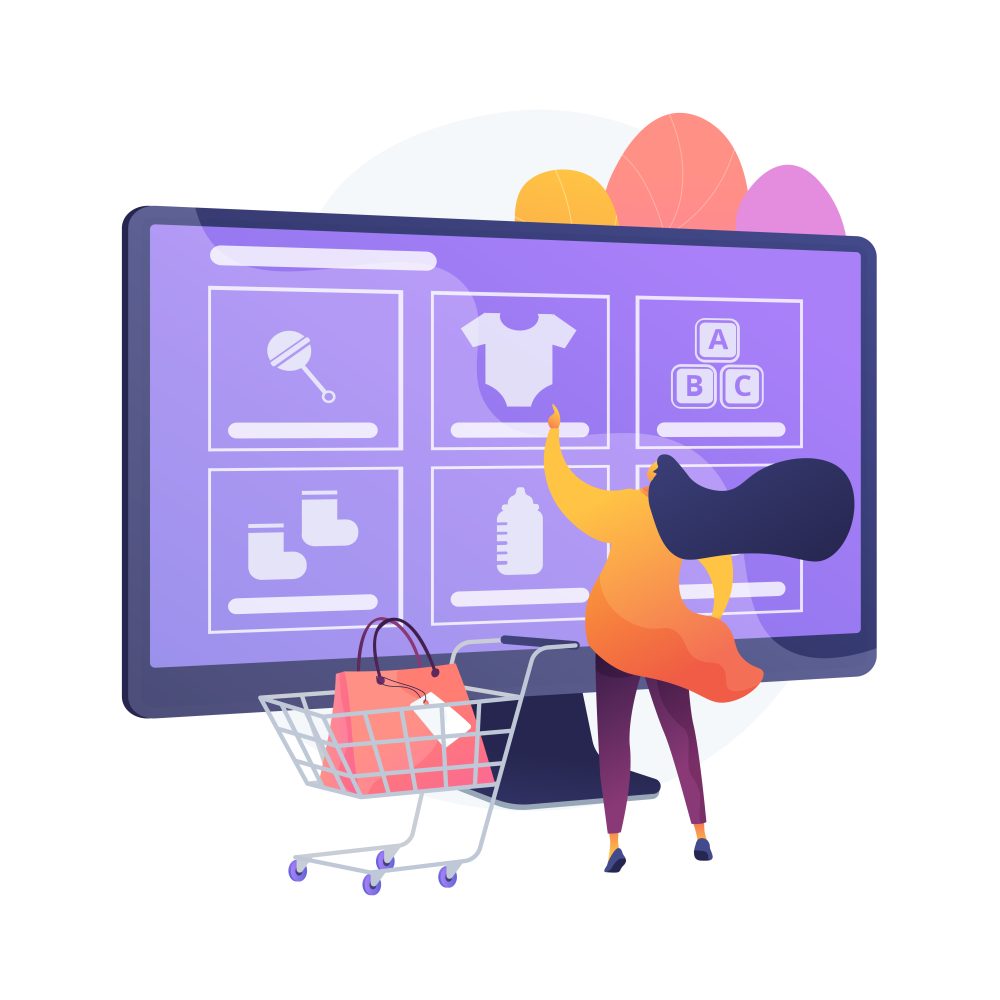The eCommerce market is exceptionally dynamic, and merchants must continually remain on top of the latest developments. New solutions and technologies are constantly being developed, companies are competing on a global scale, and consumer awareness is increasing. Customers nowadays demand excellent service and custom-tailored purchasing experiences. Because of its quick time-to-market and flexibility, Headless Commerce appears to be an ally in this contest.
What is Headless Commerce?
Headless commerce is an eCommerce architecture in which the frontend and backend of a store are separated. Headless commerce gives online stores more customization options because the frontend may be altered without affecting the backend.
The platform architecture comprises several components such as product landing pages, product databases, checkout, order and fulfilment management, inventory, marketing, and customer care, as well as how they all interact. Each website section acts as an autonomous entity that may be built separately in headless commerce.
Headless PWA eCommerce Development
PWA is a simple way to incorporate headless commerce technologies in your e-commerce store. Magento is a headless CMS. PWA is a web technology that allows you to create a Magento store that behaves and feels like a mobile app. Regardless of the browser, it acts like a native application. Push notifications, functioning on a slower internet connection, offline mode (coming soon), launching the app on the home screen, and much more will be available in the app. Because the app’s front end is built on React JS, customising it will be a breeze.
Web application development will be dominated by Progressive Web Apps (PWAs). As a result, PWA will be the best option for providing web store app-like experiences. It includes frontend developers with a flexible toolbox for developing PWA themes. Unlike a standard standalone application, developers don’t have to invest as much effort into the development.
You can hire, fire, or replace any tool in your eCommerce system using the headless strategy for PWA, based on its performance and without disrupting the entire process. It seemed unthinkable a few years ago, but the world’s most valuable corporations are doing it and getting superior outcomes in terms of flexibility thanks to the best-of-breed strategy.
Benefits of Headless Commerce:
- Accessible to Scale Up:
Headless solutions can future-proof your brand by allowing you to alter your frontend without re-platform on the backend as trends arise and your firm adjusts. Frontend developers can leverage APIs to add backend functionality to your system and employ frameworks as needed.
Using a headless solution, rather than having to develop a new website from the ground up, you can treat each new functionality separately and integrate new features as your site expands.
- Increased Personalization
The headless commerce strategy decouples the frontend presentation layer, allowing you to test personalization methods without impacting your backend systems—a significant win for all creative and development teams.
Personalization contributes significantly to the development of long-term client connections and brand loyalty. Modern marketers may use the customer data collected across all touch points to create appropriate promos and offers that will resonate with customers and provide them with a positive shopping experience.
- Quick Implementation of Latest Trends :
Headless commerce allows businesses to keep up with the newest trends and technology while launching new results at a bit of the price and time it takes with traditional methods. User interface updates take less time for development teams. The headless commerce architecture makes it simple to integrate any technology that can help you reach customers faster and convert more.
- Flexibility:
One of the main advantages of a headless commerce architecture is its flexibility. The frontend’s appearance is determined by the backend’s themes, templates, and plugins. Designers can be more creative with layouts, and programmers can experiment with new features without worrying about damaging anything. They can experiment with new user interfaces and add new functionality to the website.
- Low Cost of Development and Maintenance:
Another advantage of headless commerce solutions is the lower post-launch cost burden. Headless commerce websites save money during development, launch, and monthly hosting. An online store can start small and grow its eCommerce website designing as the business evolves by creating a more adaptable, less expensive development approach and affordable headless-only or hybrid alternatives. Stores will naturally spend less on development and upkeep due to shorter build time, renovations, and enhanced storefronts.
- Omni-Channel Experience to Customers:
In recent years, the omnichannel experience has become the norm in e-commerce. An industry that likes to give its clients an omnichannel experience should work to improve its purchasing experience across all platforms, including websites, marketplaces, social media, and even physical stores.
Websites developed on headless platforms provide a genuine omnichannel experience by allowing frontend updates such as prices, promotions, and inventory to be updated and synced in real-time across all online platforms associated with an e-commerce website.
- Increased Security:
The main goal of switching to headless commerce platforms is to avoid wasting time on development and focus on customer experience instead. As your business grows, your chosen platform must be simple to set up, navigate, and use.
One of the essential advantages of headless commerce platforms is the increased security they provide. The decoupled architecture decreases the chances of critical failures and makes the system more resistant to cyber-attacks. To maintain a secure payment flow, ensure the backend systems comply with PCI, GDPR, and other laws as needed, such as SCA under PSD2.
Conclusion:
Headless PWA commerce development agency provides a more seamless and engaging user experience and is the future of retail. Businesses must adapt to evolving technologies as customer behaviour evolves. The customer journey is becoming more complicated as new consumer touch points emerge. Headless systems can address the demand for tailored, customer-first e-commerce environments because of their flexible API-based architecture.





Leave a Reply